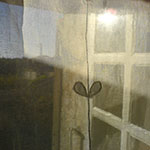Euroacademia Conferences
 Europe Inside-Out: Europe and Europeanness Exposed to Plural Observers (9th Edition) April 24 - 25, 2020
Europe Inside-Out: Europe and Europeanness Exposed to Plural Observers (9th Edition) April 24 - 25, 2020 Identities and Identifications: Politicized Uses of Collective Identities (9th Edition) June 12 - 13, 2020
Identities and Identifications: Politicized Uses of Collective Identities (9th Edition) June 12 - 13, 2020 8th Forum of Critical Studies: Asking Big Questions Again January 24 - 25, 2020
8th Forum of Critical Studies: Asking Big Questions Again January 24 - 25, 2020 Re-Inventing Eastern Europe (7th Edition) December 13 - 14, 2019
Re-Inventing Eastern Europe (7th Edition) December 13 - 14, 2019 The European Union and the Politicization of Europe (8th Edition) October 25 - 26, 2019
The European Union and the Politicization of Europe (8th Edition) October 25 - 26, 2019 Identities and Identifications: Politicized Uses of Collective Identities (8th Edition) June 28 - 29, 2019
Identities and Identifications: Politicized Uses of Collective Identities (8th Edition) June 28 - 29, 2019 The European Union and the Politicization of Europe (7th Edition) January 25 - 26, 2019
The European Union and the Politicization of Europe (7th Edition) January 25 - 26, 2019 7th Forum of Critical Studies: Asking Big Questions Again November 23 - 24, 2018
7th Forum of Critical Studies: Asking Big Questions Again November 23 - 24, 2018 Europe Inside-Out: Europe and Europeanness Exposed to Plural Observers (8th Edition) September 28 - 30, 2018
Europe Inside-Out: Europe and Europeanness Exposed to Plural Observers (8th Edition) September 28 - 30, 2018 Identities and Identifications: Politicized Uses of Collective Identities (7th Edition) June 14 - 15, 2018
Identities and Identifications: Politicized Uses of Collective Identities (7th Edition) June 14 - 15, 2018
The Influence of East Asian Art and Culture on American Painting, 1880-1920
-
-

-
Presentation speakers
- Yao Chen, Peking University, Beijing, China
Abstract:
Visual modernism in America is not a sudden, revolutionary rupture with the past, but a continuous evolution and a multifaceted synthesis, which included the artistic influence from East Asia. My research will be divided into three parts. First, I want to discuss the possible accessibility of oriental thoughts in the post-bellum America. America had a long history of intellectual encounter with East Asian thoughts and culture, from Franklin, Jefferson to Emerson, Thoreau and Eliot; they all turned to classical eastern thoughts for pragmatic solution or psychological comfort. Furthermore, from Edward Morse and Dr.William Bigelow to Ernest Fenollosa and Arthur Dow, those scholars landed personally on East Asia and fully immersed in the classical culture. What they experienced and promulgated was not only the first-hand material but also more vivid panorama of daily life. Instead of spectacularization of Near and Middle east culture, American Painters turned to East Asian Art for remedy to alleviate growing sense of spiritual displacement and restlessness while making their own efforts of reflecting American Identity. Second, I intend to do some comparative formal analysis of the artworks by John Twachtman, Dwight W.Tryon and Thomas Dewing with East Asian artworks. Those three painters among the most representative figures whose art featuring sobriety, simplicity, subtle charm, subdued harmonious and imperceptible gradations. Just like Ernest Fenollosa’s ideal ways of synthesis, American artist at the turn of the 20th century not only merely admiringly imitate the superficial forms of East Asian art as their French counterpart did in the 1870s to 1890s, but rather to seize its underlying aesthetic principles as a means of developing a new ‘democratic’ art of their own. Finally, I’ll attempt to interpret the causes and consequences of this phenomenon under social and cultural context. For the Northeast Intelligentsia, Japanese art, mostly be considered as an advanced version or variant of ancient Chinese art, served as a paradigm to America nationalism and break the European monopoly on prestigious of old tradition, which served somehow as a stereotype for establishment of national school based on a powerful tradition. East Asian art and culture influence has some successive effects, just like Edward Morse invited Dr. William Bigelow to Japan, and Bigelow, in turn, persuade his friends Henry Adam and John LaFarge to Japan. Besides, Ernest Fenollosa’s position in the MFA was succeeded by Arthur Dow, and the latter through his monograph on Composition makes some influence on Max Weber and George O’Keeffe. The assimilation of East Asian art and culture fully reflected how American art intersects with and in turn modulated by artistic practices around the world.
-
Related Presentations

Design Education: New Challenges for the 21st Century
- Joel Olivares

Synthecultural Communities: What, How, Why, and Who Cares?
- Dana E. Webber

The Crucial Role of Social Movements in Making Politics
- Yavuz Yildirim















